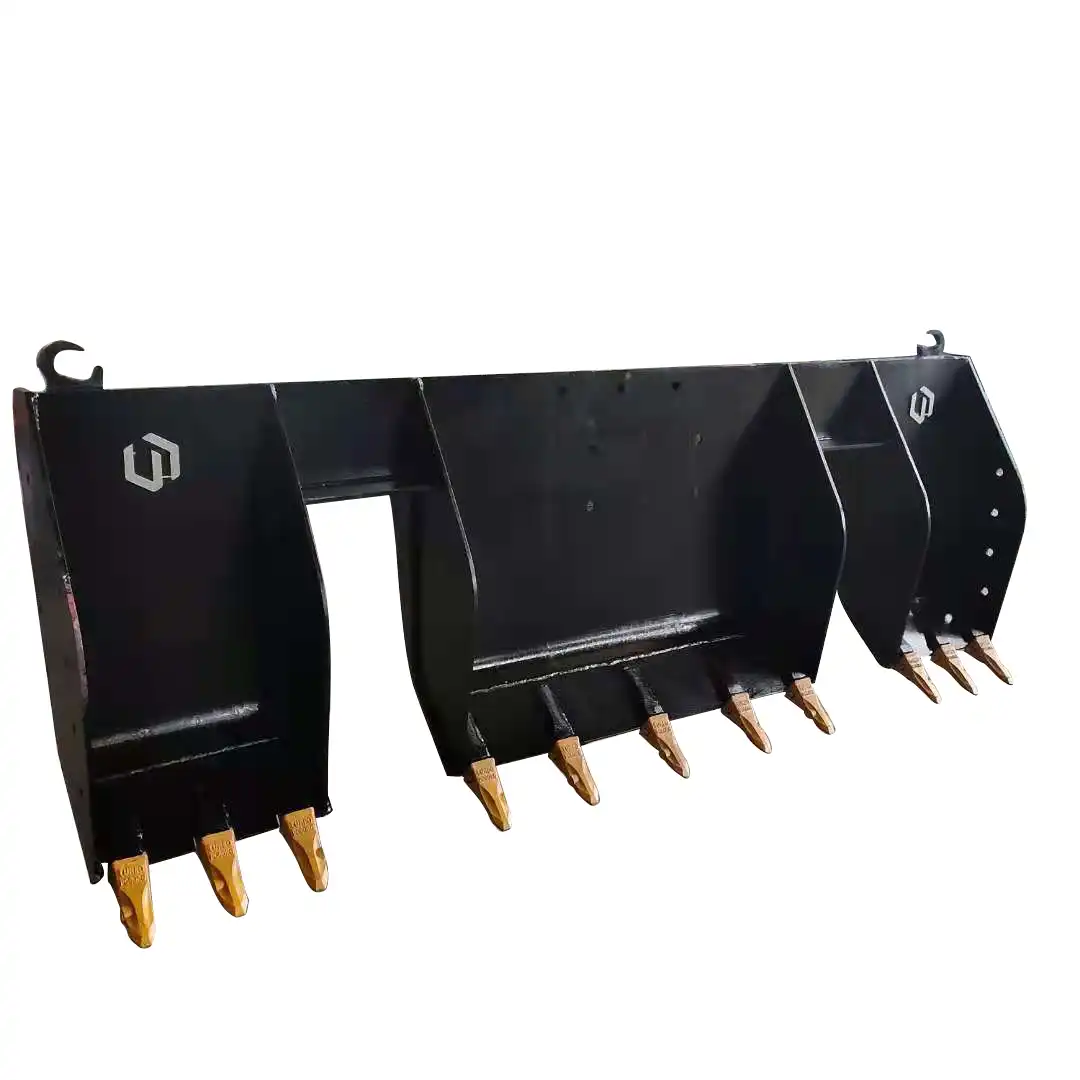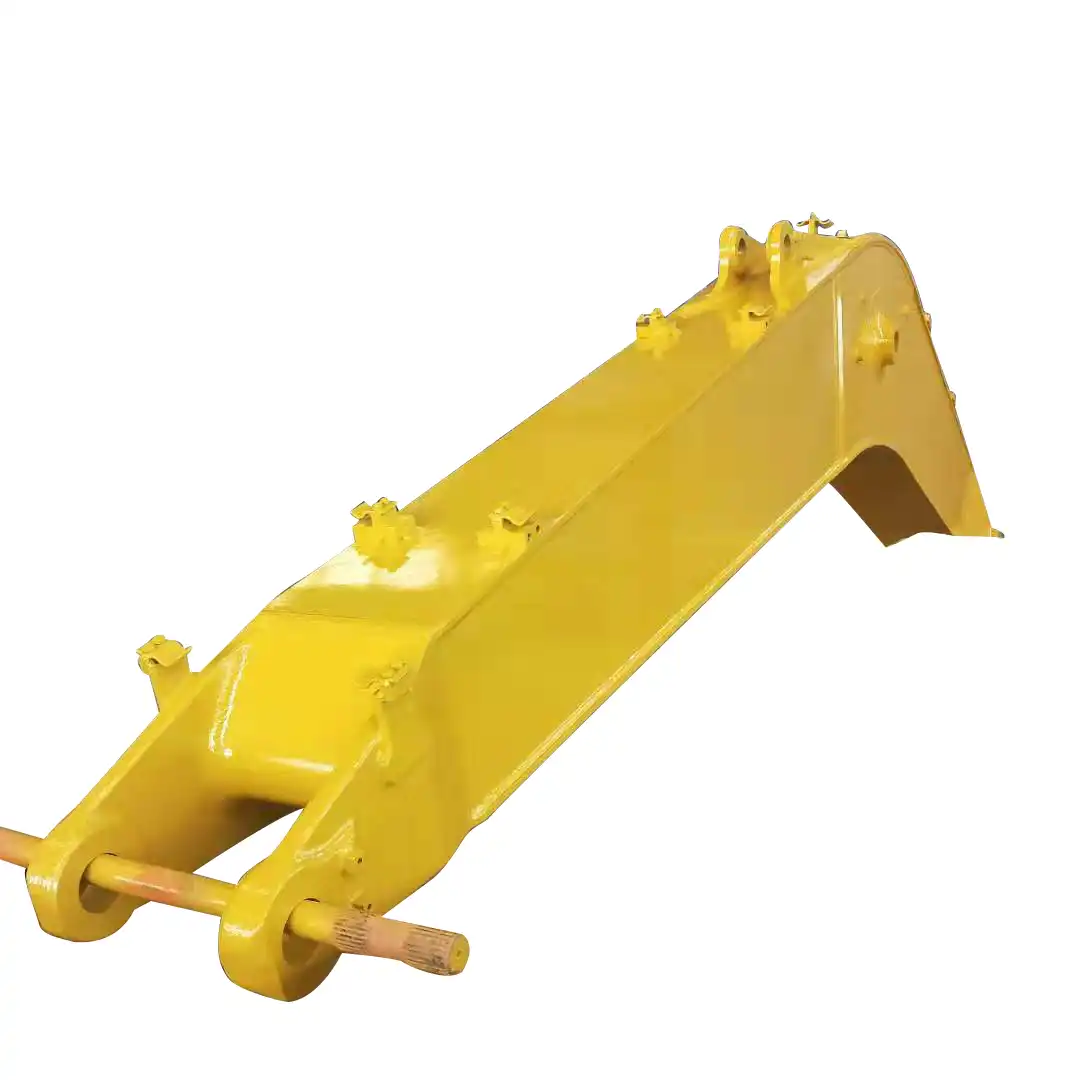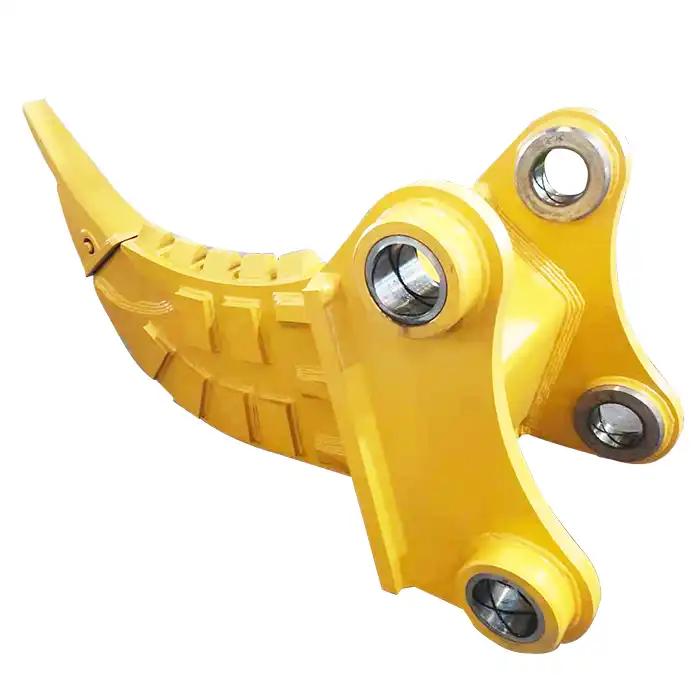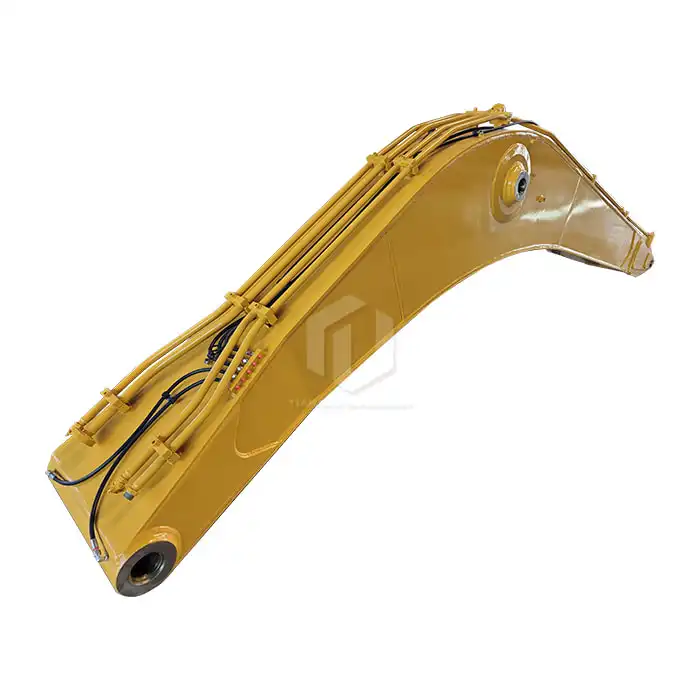Excavator Grab Arm: Why is Beveling Welding Key in the Manufacturing Process?
In the world of heavy machinery and construction equipment, the excavator grab arm stands out as a crucial component for various material handling tasks. From dock unloading to waste steel handling, these versatile attachments have become indispensable in numerous industries. However, what truly sets apart a high-quality excavator grab arm is the manufacturing process behind it. One key aspect that plays a pivotal role in ensuring the durability, strength, and precision of these arms is beveling welding. In this article, we'll delve into the importance of beveling welding in the production of excavator grab arms and explore why it's such a critical factor in their overall performance and longevity.

The Role of Beveling Welding in Enhancing Excavator Grab Arm Durability
Durability is paramount when it comes to excavator grab arms. These attachments are subjected to immense stress and strain during their operational life, often working in harsh environments and handling heavy loads. Beveling welding plays a crucial role in enhancing the durability of these arms by creating stronger, more resilient joints between metal components.
Beveling welding involves preparing the edges of the metal pieces to be joined by creating a beveled or angled surface. This preparation allows for deeper penetration of the weld material, resulting in a stronger bond between the pieces. For excavator grab arms, which are often constructed from thick steel plates, this deep penetration is essential for creating joints that can withstand the rigors of daily use.
The increased surface area created by beveling also allows for a larger weld deposit, further strengthening the joint. This is particularly important in areas of the grab arm that experience high stress, such as the connection points between the arm and the excavator boom, or the joints between the arm's segments. By utilizing beveling welding techniques, manufacturers can ensure that these critical areas are reinforced and better able to withstand the forces they'll encounter during operation.
Moreover, beveling welding helps prevent weld defects such as lack of fusion or incomplete penetration, which can significantly compromise the integrity of the grab arm. These defects can lead to premature failure, reduced performance, and potential safety hazards. By employing proper beveling techniques, manufacturers can minimize the risk of these issues and produce excavator grab arms that deliver consistent, reliable performance throughout their service life.
Beveling Welding vs. Other Welding Methods: Why It's Crucial for Grab Arms
While there are various welding methods available for fabricating excavator grab arms, beveling welding stands out as particularly crucial for these components. To understand why, it's helpful to compare beveling welding with other common welding techniques and examine their respective strengths and limitations in the context of grab arm production.
One alternative to beveling welding is fillet welding, which involves joining two pieces of metal at right angles to each other. While fillet welds can be quick and easy to apply, they often lack the deep penetration and strength that beveled welds provide. This can be problematic for excavator grab arms, which require robust joints capable of withstanding multidirectional forces and repeated stress cycles.
Another method is butt welding, where two pieces of metal are joined edge to edge without any beveling. While this can be suitable for thinner materials, it becomes less effective for the thick steel plates typically used in excavator grab arms. Without beveling, it's challenging to achieve full penetration through the entire thickness of the material, potentially leading to weak spots in the weld.
Beveling welding addresses these limitations by allowing for complete penetration and fusion of the weld material throughout the entire joint. This results in a stronger, more uniform weld that is better equipped to handle the demanding conditions excavator grab arms face. The angled preparation of the metal edges also facilitates better access for the welding equipment, ensuring a more precise and controlled welding process.
Furthermore, beveling welding offers superior crack resistance compared to other methods. The gradual transition created by the beveled edges helps distribute stress more evenly across the weld, reducing the likelihood of crack initiation and propagation. This is particularly important for excavator grab arms, which are subject to repeated loading and unloading cycles that can lead to fatigue failure if the welds are not properly reinforced.
How Does Beveling Welding Ensure Strength and Precision in Excavator Grab Arm Production?
The strength and precision of an excavator grab arm are critical factors that directly impact its performance and reliability. Beveling welding plays a significant role in ensuring both of these qualities during the production process. Let's explore how this welding technique contributes to the overall quality of the finished product.
Strength is perhaps the most obvious benefit of beveling welding in excavator grab arm production. The deeper penetration and increased weld area provided by beveling result in joints that can withstand higher loads and resist failure more effectively. This is particularly important for grab arms, which must be able to handle heavy materials and withstand the dynamic forces involved in excavation and material handling operations.
The strength provided by beveling welding also contributes to the overall structural integrity of the grab arm. By creating robust connections between components, beveling welding helps maintain the arm's geometry under load, preventing deformation and ensuring consistent performance. This is crucial for maintaining precise control during operation, allowing operators to handle materials accurately and efficiently.
Precision in excavator grab arm production is equally important, and beveling welding contributes to this in several ways. First, the beveling process itself requires careful preparation and measurement, ensuring that components are aligned correctly before welding begins. This attention to detail translates into more accurate assembly of the grab arm, resulting in a product that meets exact specifications.
Additionally, the controlled heat input associated with beveling welding helps minimize distortion during the welding process. This is particularly important for maintaining the dimensional accuracy of the grab arm, ensuring that all moving parts function as intended and that the arm interfaces correctly with the excavator and any attachments.
The precision afforded by beveling welding also extends to the arm's performance in the field. By creating strong, uniform welds, beveling helps maintain the arm's alignment and balance during operation. This translates to smoother, more controlled movements, allowing operators to work with greater accuracy and efficiency.
Moreover, the precision of beveling welding contributes to the longevity of the excavator grab arm. Accurate welds that fully penetrate the material are less likely to develop fatigue cracks or fail under stress, leading to a longer service life and reduced maintenance requirements. This not only benefits the end-user in terms of reliability and cost-effectiveness but also enhances the reputation of the manufacturer for producing high-quality, durable equipment.
Tiannuo Machinery Excavator Grab Arm
The excavator grab arm is a critical component in various material handling applications, and its performance and durability are heavily influenced by the manufacturing processes used in its production. Beveling welding stands out as a key technique that significantly enhances the strength, precision, and overall quality of these essential attachments.
By providing deeper weld penetration, increased joint strength, and superior crack resistance, beveling welding ensures that excavator grab arms can withstand the demanding conditions they face in industries such as dock unloading, railway transportation unloading, and waste steel handling. The precision and attention to detail required in the beveling process also contribute to the production of grab arms that meet exact specifications and deliver consistent, reliable performance.
Tiannuo offers a range of excavator grab arms designed for various applications, including dock unloading, railway transportation unloading, and waste steel handling. Our manufacturing process incorporates beveling welding to prevent deformation and ensure the highest standards of quality and durability. If you are in the market for an excavator grab arm manufacturer, we invite you to reach out to our team for more information and expert guidance. Please feel free to contact our manager at arm@stnd-machinery.com, or our team members at rich@stnd-machinery.com and tn@stnd-machinery.com. We're here to help you find the perfect solution for your material handling needs.
References
- American Welding Society. (2015). Welding Handbook, Volume 2: Welding Processes, Part 1. Miami, FL: AWS.
- Kou, S. (2003). Welding Metallurgy. Hoboken, NJ: John Wiley & Sons.
- Weman, K. (2011). Welding Processes Handbook. Cambridge, UK: Woodhead Publishing.
- Lancaster, J.F. (1999). Metallurgy of Welding. Cambridge, UK: Woodhead Publishing.
- O'Brien, R.L. (Ed.). (1991). Welding Handbook: Welding Processes. Miami, FL: American Welding Society.









